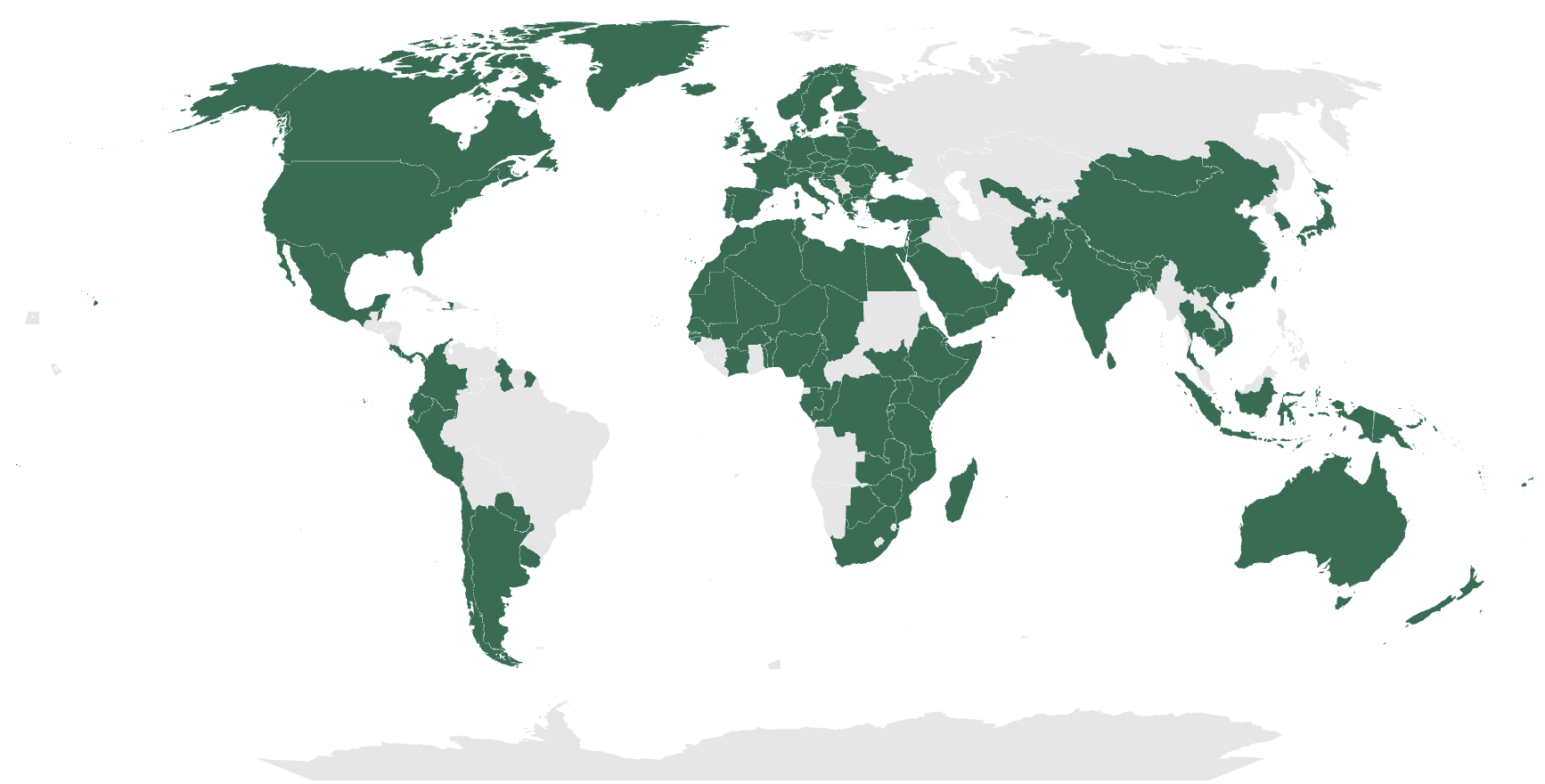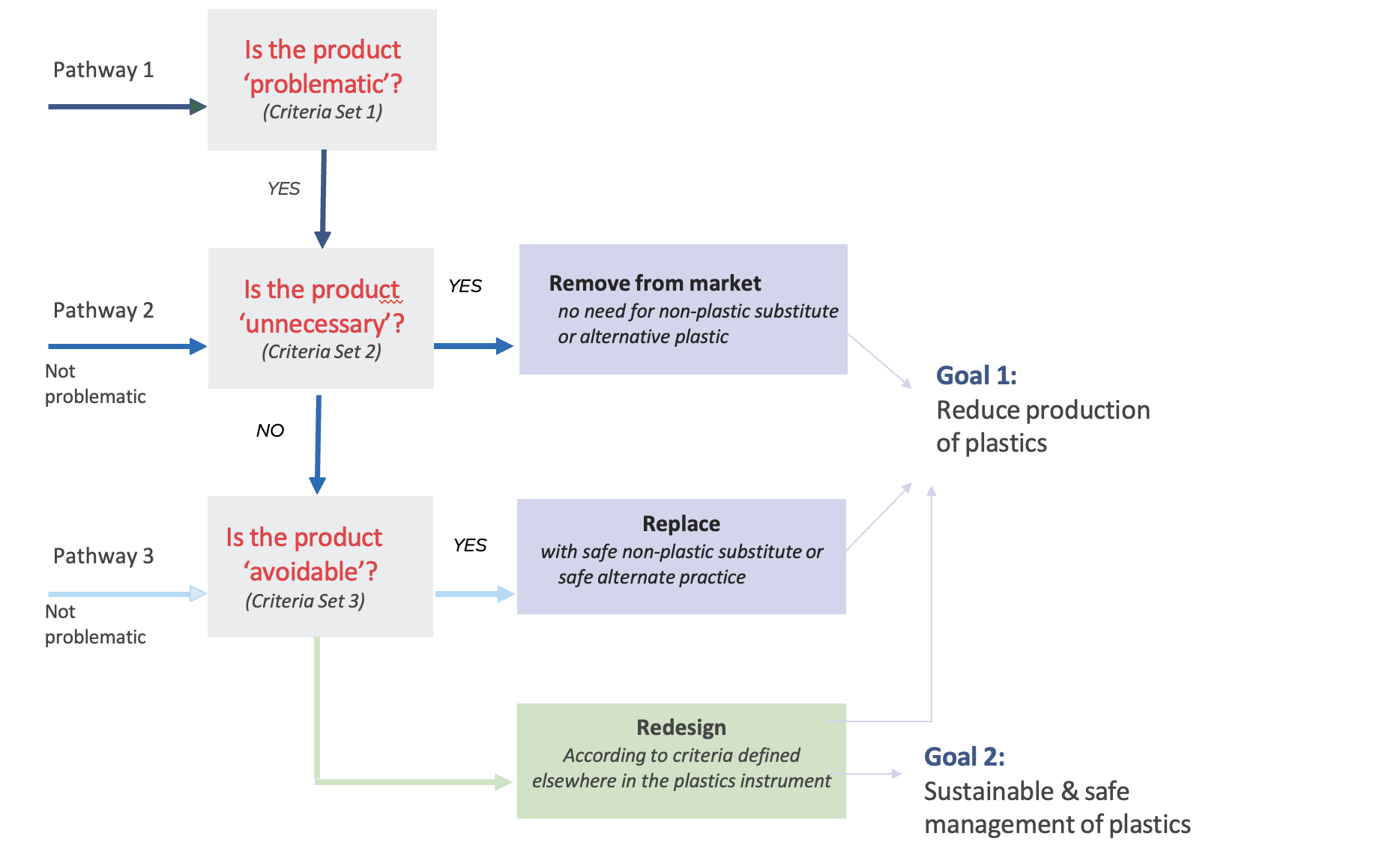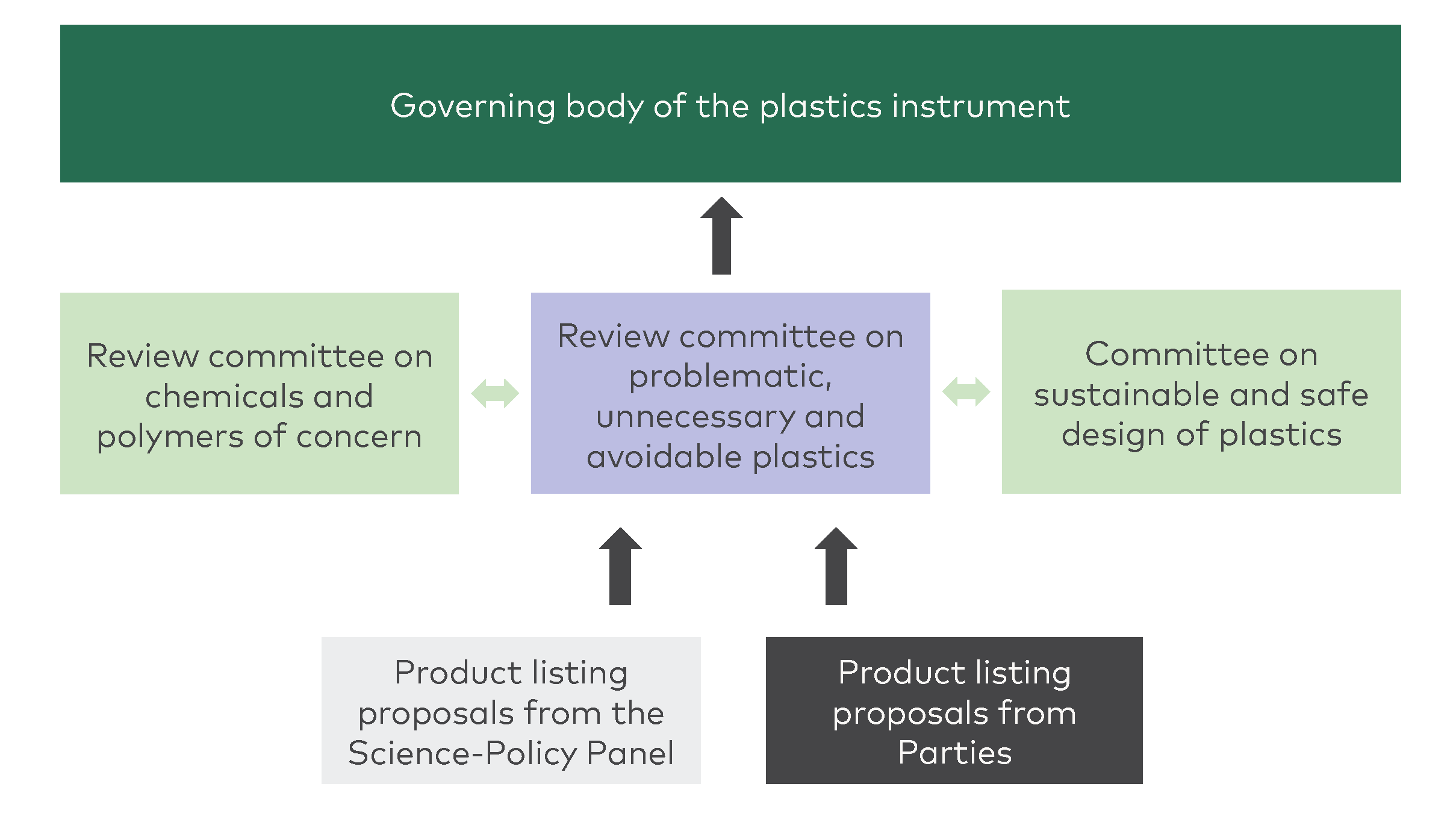Executive Summary
The goal of this report is to contribute to the development of control measures for problematic, unnecessary or avoidable (PUA) plastic products under the international legally binding instrument on plastic pollution, including in the marine environment (hereafter: plastics instrument), developed pursuant to Resolution 5/14 of the United Nations Environment Assembly (UNEA). Traditionally, such plastics have been associated with single-use plastics, such as carrier bags, straws, disposable cutlery, and packaging materials. These represent approximately 36% of plastic production, of which an estimated 85% is mismanaged (UNEP, 2023a). Notably, 141 countries have banned or restricted some form of plastic products, and 33 countries have banned or restricted one or more plastic polymers or monomers (in some cases, for particular applications only). Figure A illustrates the geographic coverage of bans or restrictions at the national or regional level applicable to at least one plastic product.

Figure A. Geographical view of countries in which at least one plastic product is banned or restricted at the national or regional level (n=141).
However, the plastic pollution problem extends well beyond single-use applications. For the upcoming global plastics agreement, there is therefore a need to develop global criteria for determining single-use plastics, as well as other applications and categories of products which can be considered problematic, unnecessary or avoidable. The criteria can be used to regulate current and future plastic products at the global and national level.
The identification and gradual removal of unsafe and unsustainable plastic items, accompanied by redesign and detoxification of indispensable products, will play a vital role in reducing plastic pollution. It will help in stemming production levels, as well as reducing waste generation and subsequent leakage to the environment and biota (UNEP, 2022).
This report aims to supplement discussions of the Intergovernmental Negotiating Committee (INC), tasked with developing the plastics instrument as per UNEA Resolution 5/14. The report specifically focuses on paragraph 3b which advocates for provisions to promote sustainable production and consumption of plastics through, among other things, product design and environmentally sound waste management, including through resource efficiency and circular economy approaches.
The report builds on the options outlined in the Zero Draft of the plastic instrument presented for the third session of the INC held in November 2023 in Nairobi, Kenya (UNEP, 2023b). The Zero Draft calls for criteria, annexes and procedures for listing “problematic and avoidable” plastic products. The criteria sets proposed in this report expand on the Zero Draft’s two classifications of problematic and avoidable by disaggregation into three classifications of problematic, unnecessary and avoidable products.
Keeping the three classifications distinct from each other allows for the development of control measures specific to each classification. This could include measures ranging from elimination without replacement to support an overall reduction in production of plastic, to redesign in support of resource efficiency.
The aim of determining problematic, unnecessary and avoidable plastic products is to establish appropriate measures at the global and national levels to, for e.g.:
- remove them from the market,
or - reduce their production by promoting alternate practices or non-plastic substitutes,
and - redesign problematic products to be safe and functional for intended uses, and according to criteria for sustainable and safe product design.
The potential criteria proposed are based on a determination of a product’s function or end-use, and whether it is deemed essential or not. The criteria below are clustered thematically by key concerns.
1. Problematic plastic products refer to products which have adverse impacts across the life cycle of the products (environmental and human health).
Potential criteria for determining problematic plastic products:
Hazards |
|
Emissions generation |
|
Impediment of circularity |
|
Lack of transparency |
|
2. Unnecessary plastic products refer to products with a function that is not essential because they do not provide significant added value to society.
Potential criteria for determining unnecessary plastic products:
Availability or potential for availability of alternate practices that do not require plastic (towards elimination) |
|
Availability or potential for availability of alternate designs that remove plastic component/s (towards elimination) |
|
3. Avoidable plastic products refer to products with a function that is essential, but demand for the product can be reduced through non-plastic substitutes, alternate designs and alternate practices.
Potential criteria for determining avoidable plastic products:
Availability or potential for availability of alternate practices that reduce the need for new versions of the product (towards reduction) |
|
Availability or potential for availability of non-plastic substitutes that reduce the need for the product (towards reduction) |
|
Availability or potential for availability of alternate designs that reduces the need for new versions of the product (towards reduction) |
|
Figure B provides a simple decision hierarchy for determination of problematic, unnecessary and avoidable products. Three decision points are provided to help prioritise actions towards a safe and sustainable plastics economy, based on the above criteria.

Figure B. A simple decision tree to determine actions to address problematic, unnecessary and avoidable plastic products.
All actions should contribute to the two main goals of:
- Goal 1 – Reduce production of plastics through the removal of unnecessary products from the market, and replacement with safe non-plastic substitutes and alternate business practices.
- Goal 2 – Sustainable and safe management of plastics that remain on the market through redesign according to sustainability criteria, including safe alternatives, and circular business practices.
To strengthen the global governance of plastics, criteria developed under the plastics instrument could act on two levels by stimulating the following measures:
- Mandatory measures for listed products, including bans and restrictions, trade measures between Parties and with non-Parties of listed products, and time-restricted exemptions for specific products.
- Voluntary measures for non-listed products adopted at the national level based on global criteria, including national lists for action beyond the obligations established under the instrument.
Additionally, voluntary national listings could be collated into a global database for candidate products administered by the Secretariat of the plastics instrument. This could provide 1) an opportunity to identify candidate products that can in future be considered for global listing under the plastics instrument, or 2) may inform strengthened voluntary action at the national level.
Institutional arrangements can be established to support the listing of PUA products. As reflected in Figure C, these could include the development of processes for 1) Submission and review of proposals, 2) Comprehensive review by the Review Committee on PUA products, 3) Cooperation with other possible committees, and 4) Governing body decisions. Listing should be based on a proactive approach, endeavouring to remove products of concern from the market in their early stages to prevent adverse impacts before they materialize. Independent scientific advice plays a pivotal role in this context.

Figure C. The science-policy interface of the plastics instrument.